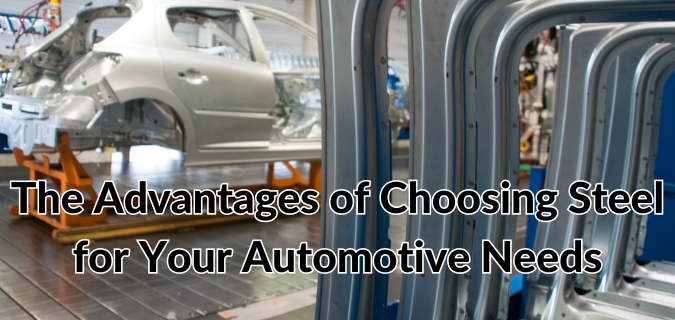
Steel plays a crucial role in the automotive industry due to its adaptability, allowing it to be utilized in nearly every component of a vehicle for various functions. Its remarkable strength combined with relatively low weight makes steel perfect for ensuring protection, providing structural support, and maintaining cost-efficiency. From the vehicle's frame and chassis to its roof, door beams, wheel rims, radiators, exhaust systems, bushings, bearings, and body panels, steel is consistently the preferred choice across the automotive sector. It remains one of the most essential and widely used materials in modern automobiles.
Varieties of Automotive Steel
Steel's versatility in automotive applications stems largely from the diverse types and alloys tailored to meet specific requirements. The five primary categories include:
Stainless Steel
Stainless steel is renowned for its resistance to corrosion, ability to handle extreme temperatures, and overall durability. These qualities make it invaluable in automotive applications such as exhaust systems, engines, and component assembly.
High-Strength Steel
Known as high-strength steel (HSS) or advanced high-strength steel (AHSS), this type is strong, flexible, lightweight, and boasts excellent fatigue resistance. Its lightweight nature reduces costs and is ideal for vehicle frames, bodies, and undercarriages.
High-Carbon Steel
High-carbon steel is prized for its wear resistance, making it suitable for components that face significant stress, such as mufflers, door panels, bushings, frames, and chassis parts.
Low-Carbon Steel
With affordable production costs, low-carbon steel is commonly used in brackets, housings, suspension parts, and various exterior elements like rims, screws, washers, nuts, bolts, and fasteners.
Galvanized Steel
Offering a cost-effective alternative to stainless steel, galvanized steel features a thin zinc coating that minimizes maintenance and repairs on vehicles. It is durable, readily available, and less expensive than high-carbon and high-strength steel.
Why Steel Stands Out Among Other Materials in Automotive Applications
Steel has long been and remains the dominant material in automobiles. Its dependability, versatility, and continuous advancements through innovative engineering make it the optimal choice for automotive manufacturing. Balancing safety, design, affordability, weight, and practicality, steel is hard to surpass. Additionally, as the most recycled material globally, steel aligns with the growing environmental responsibilities embraced by manufacturers.
When Steel May Not Be the Ideal Option
Despite steel's dominance, there are scenarios where alternative materials might be considered. The primary driver for selecting other materials is often the need to reduce vehicle weight and enhance fuel efficiency. Some common alternatives to steel include:
- Aluminum, while lightweight (an aluminum panel weighs roughly half as much as a steel panel of equivalent strength), is typically more expensive and less cost-effective in high-volume production. Recent advancements in steel technology have narrowed the gap in weight reduction, making aluminum less advantageous in some cases.
- Plastics, which excel at resisting dents and chips caused by road debris, are often used for bumpers. However, they lack the structural integrity required for critical components and may exhibit inconsistencies in high-volume production. While once favored for their corrosion resistance, plastics now face competition from stainless and galvanized steel, making their use less justifiable in many instances.
Partner with Capital Steel & Wire for Your Automotive Steel Needs
We're committed to helping you select the best steel solutions for your automotive projects. With cutting-edge steel technologies and the flexibility of various alloys, steel is integral to nearly every aspect of vehicle construction. Reach out to us today to explore options in automotive sheet steel and other steel products for diverse applications.
--- This version retains the original message while enhancing readability and flow, adding depth where necessary to reach the desired character count.Electromagnetic Wave Absorbing Patch
Patch Type Absorbing Material,Patch Absorbing Material,Absorbing Material Patch
Zhejiang Yuanbang Material Technology Co., LTD , https://www.yoboemiemc.com